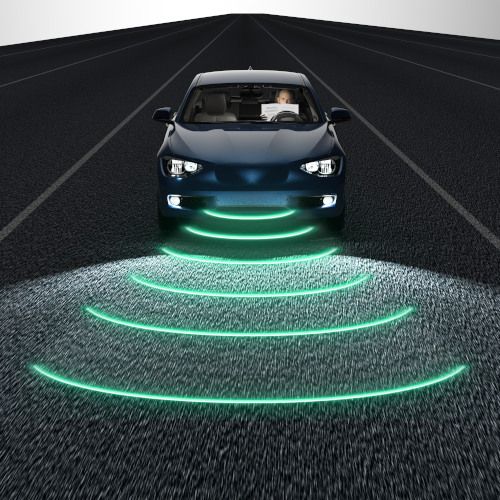Road Markings and Autonomous Driving Systems
Road markings will remain crucial for all types of guidance systems as we enter the age of mixed-level autonomous driving. Robert N. Dingess, CEO of the US-based Mercer Strategic Alliance, and policy director for a global road marking alliance, explains why.
Properly installed and well-maintained road markings provide guidance for motorists, pedestrians and cyclists. While an essential roadway safety device today, I am often asked if markings will continue to serve a similar purpose with the advent of machine driven systems. Significant auto industry press reports have speculated that the day will arrive when we no longer need traditional traffic control devices (signals, signs, markings). While it is difficult to speculate on the speed of advances in technology, it is much more likely that, with few exceptions, roadways 50 years from now will look very much like roadways today.
Road markings may actually increase in importance as more automated vehicle systems are deployed. Fully understanding why this is the case requires a brief review of how automated vehicle systems are defined and operate. The Society of Automotive Engineers (SAE) and the U.S. Department of Transportation recently released documents describing five levels of automation. These levels better define the role of both human and machine systems in the guidance of vehicles.
Level one automation provides driver assistance through either enhanced braking, providing lane tracking or warning if the vehicle drifts beyond road markings. Level two automation integrates these technologies into an enhanced cruise control and guidance system designed to steer vehicles using road markings. Some level two systems can operate by locating the vehicle in front and simply following the same lane track. In level one and two, human drivers are expected to monitor the vehicle and ensure that systems are performing safely. The Tesla™ model S is an example of level two automation. Since these vehicles often directly interface with road markings, proper marking installation and maintenance practices are essential. The SAE and the American Society of Highway and Transportation Officials (AASHTO) are working to develop a joint road marking specification designed at supporting level two machine vision technologies.
Transitioning from level two to level three automation is difficult. It requires significant advances in policy, process and technology. Most manufacturers seeking to develop level three automation are incorporating new laser based technologies such as LiDAR with the goal of creating a 360 degree “visual” field of view. Others are hoping to develop digital infrastructure maps that scan and recreate the road virtually. Some seek to combine some variation of all these technologies into a series of redundant steering and guidance systems. Under level three, the human driver can safely turn over driving the vehicle to the automated system. Human drivers are expected to retake control of the vehicle when warned by the system. No standard has been set regarding how much time is enough to safely expect a human driver to re-engage. It is likely that level three automated vehicle systems will initially be deployed in highly controlled settings (Bus Rapid Transit, toll roads). A level four automated system can operate safety in all but a few environments (snow, severe rain). Once engaged by the driver, the automated system operates without driver attention. A level five automated system requires no human interaction.
There are many reasons to believe that regardless the level of automation, road markings will retain its importance for the foreseeable future. First, there are no commercially available level 3-5 automated vehicle systems today. Secondly, there are many experts who believe that the complex nature of roadways will delay the deployment of full level five automation as far as 50-75 years into the future. Thirdly, regardless of the rate of automated system progress, future roadway agencies will likely continue to maintain roadways for a mix of human, machine and fully automated systems well past 2050. In this shared environment, markings will likely increase rather than decrease in importance. Level three and level four automation will benefit from enhanced uses of road markings to safely navigate systemic problem areas such as work zones. It is far more likely that specially designated marking colors, such as orange for work zones or purple for toll lanes, will be increasingly used to assist machine vision systems. While the 21st century may be remembered as the age of automated transportation it should also result in a robust and thriving market for road markings.
